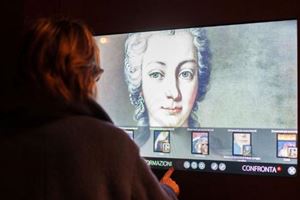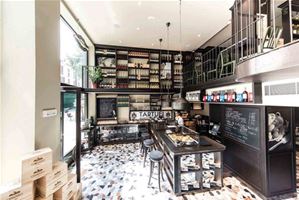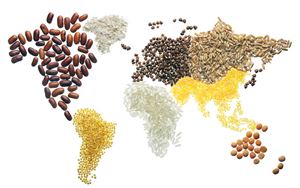Where is the line between genius and madness? How does madness influence art? How has the relationship between art and madness changed throughout the centuries? These are the questions visitors are asked to consider at an exhibit in Siena’s Santa Maria della Scala Museum: Genio e Follia: Il giorno e la notte dell’artista (‘Art, genius and folly: The Day and Night of the Artist’).
Running until May 25, 2009, the exhibit was curated by one of Italy’s most authoritative art critics, Vittorio Sgarbi, and gathers some 400 works probing the link between artistic production and mental state. The exhibit considers the often ambiguous and difficult experience of ‘living in the real world’ for those who are mentally ill.
Ranging from sculptures, paintings and drawings to video and art installations, the vast selection of works was meticulously chosen to illustrate the link between art and madness throughout the history of art.
The expressive force of the works showcased is indeed poignant, and at times, distressing. The viewer must be prepared to delve into the psyches of some of the world’s most talented, yet unstable artists. It is a unique experience that will inform one’s view of the experience of mental illness, not only in art but also in life.
Among the artists whose works are included are Vincent Van Gogh, Ernst Ludwig Kirchner, Edvard Munch, Max Ernst, Otto Dix, George Grosz, Renato Guttuso, Mario Mafai and Antonio Ligabue. The works are on loan from some of Europe’s most famous museums, including Musee d’Orsay, Musée National d’Art Moderne, Centre Georges Pompidou, the Prado, Kirchner Museum, the National Gallery for Modern Art in Rome, as well as the Brera and the Braidense National Library in Milan.
In nine sections, the exhibit opens with an exploration of the many ways in which the mentally ill were treated from the middle ages to today, including medical instruments, descriptions of daily life in psychiatric hospitals, the advent of the positivist culture in the eighteenth century, and the psychological theories advanced by famed scholar Cesare Lambroso. The section ends with some of the drawings and objects made by mentally ill patients.
The second section displays the busts by Messerschmidt, which illustrates a series of bizarre and exasperated facial expressions. The third section explores the artworks of a handful of contemporaries of Frederic Nietzsche, such as Van Gogh, Kirchner and Munch. The paintings probe the relationship between genius and madness, as well as the artists’ own awareness of this relationship.
The forth section gathers a selection of paintings by Guttuso, Dix, Grosz and Mafai that deal directly with the theme of madness, exploring the different ways in which these artists chose to depict their condition.
The works in the fifth section come from the Prinzhorn Collection of Heidelberg, one of the most extensive collections of art by the mentally ill. Special attention is given to the rise of art as therapy, a movement championed by Hans Prinzhorn, psychiatrist and art historian.
The sixth section considers whether madness is a necessary part of the creative and inventive process, and the seventh section is dedicated to Ligabue, one of Italy’s most acclaimed, self-taught painters. Ligabue lived a solitary life, and his work pays testimony his sadness. His expressive paintings represent the inherent tragedy and cruelty in both life and nature.
Other Italian artists are the focus the eighth section, and the ninth section is dedicated to depictions and scenes of ‘madness’ in Tuscany.
The exhibit ends with a series of works on the ‘lucid madness’ of artists from the twentieth century, and a visit to the early-nineteenth-century psychiatric hospital San Niccolò designed by the renowned architect Francesco Azzurri.
Arte, genio e follia. Il giorno e la notte dell’artista
Complesso Museale Santa Maria della Scala, Siena
Opening hours: every day from
10:30am to 7:30pm
Ticket price: full 8 euro; reduced 6 euro.







